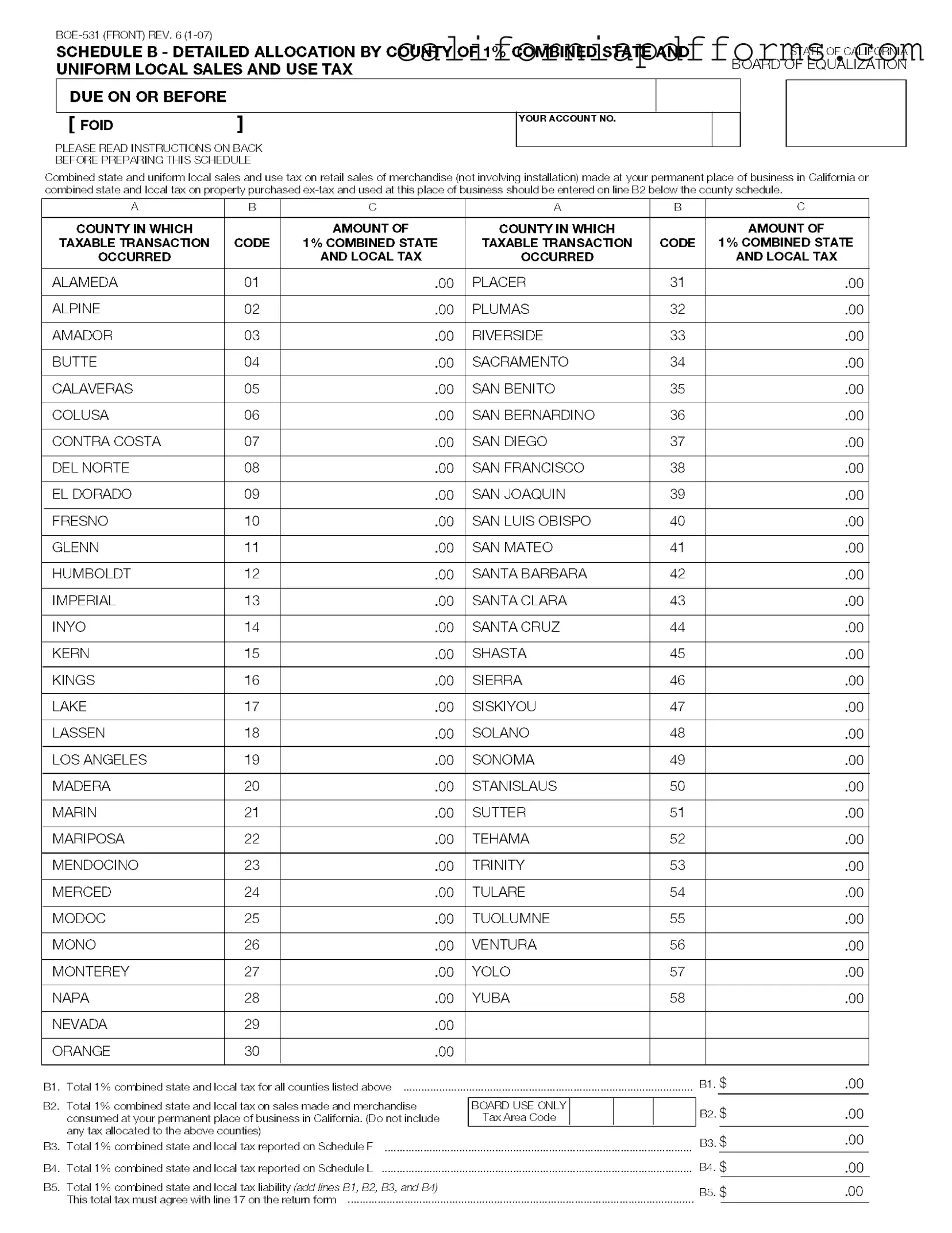The California BOE-531 form is primarily used for reporting the detailed allocation of the 1% combined state and local sales and use tax by county. Businesses that operate in California must complete this form to report their taxable sales and ensure compliance with state tax regulations. This helps the California Board of Equalization accurately distribute tax revenues to the appropriate local jurisdictions.
Any business that sells taxable merchandise at a permanent location in California is required to fill out the BOE-531 form. This includes retailers, auctioneers, vending machine operators, and out-of-state sellers who have been authorized to operate in California. If your business activities fall into any of these categories, completing this form is essential for proper tax reporting.
To complete the BOE-531 form, follow these steps:
-
Enter your account number at the top of the form.
-
List the counties where taxable transactions occurred in Column A.
-
Assign the appropriate code for each county in Column B.
-
In Column C, report the amount of the 1% combined state and local tax for each county.
-
Calculate the total tax for all counties and enter it on line B1.
-
Complete line B2 with the total tax on sales made at your permanent place of business.
-
Ensure all totals are accurate and consistent with your overall tax return.
It’s important to read the instructions on the back of the form carefully to ensure accurate reporting.
Failing to file the BOE-531 form can lead to several consequences, including penalties, interest on unpaid taxes, and potential audits. The California Board of Equalization takes compliance seriously, and businesses that do not report their sales tax accurately may face financial repercussions. It is crucial to file on time to avoid these issues.
Yes, you can amend your BOE-531 form if you discover an error after submission. To do this, you will need to file an amended return with the correct information. Be sure to include a clear explanation of the changes made. It’s advisable to do this as soon as possible to minimize any potential penalties or interest.
Your completed BOE-531 form should be sent to the California Board of Equalization at the address specified on the form. Make sure to check for any updates regarding mailing addresses or submission methods, as these can change. If you prefer, some forms may also be submitted electronically, depending on your account setup.
Yes, the BOE-531 form must be submitted by the due date specified for your sales tax return. Typically, this is the same deadline as your regular sales tax return, which may be quarterly or annually, depending on your business's reporting schedule. It’s important to mark your calendar and ensure timely submission to avoid penalties.
